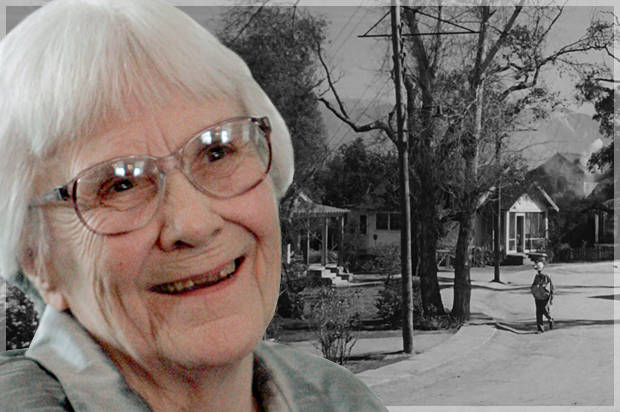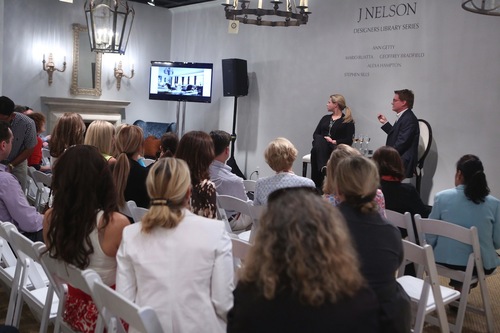In 1936, Meret Oppenheim, the Swiss Surrealist artist, had tea with Pablo Picasso at the Café de Flore, in Paris. Oppenheim was wearing a bracelet, of her own design, that was clad in ocelot fur. Picasso admired it, noting that one could cover anything with fur. Soon afterward, Oppenheim produced her most famous work: a teacup, saucer, and spoon covered with the creamy-tan fur of a Chinese gazelle. The piece is now in the collection of the Museum of Modern Art, in New York, and is celebrated for its suggestive conjunction of the domestic and the erotic. Oppenheim’s teacup came to mind last fall, while I was browsing in a shoe store and noticed that Birkenstock had created a peculiar version of its Arizona sandal—the classic, two-strap style long favored by hippies and German tourists. The sandal had the familiar chunky cork base and thick, buckled straps in dull brown-gray suède, but the insole and the straps were lined with fluffy white shearling. The shoe looked alluringly comfortable, like a Teddy bear that cuddled back. It also looked perplexingly impractical: if it’s cold enough for fur, it’s too cold—and likely too wet—for open-toed shoes. The sandal was witty, provocative, and slightly silly. Like an iPad, or an eight-dollar bottle of cold-pressed juice, it seemed the covetable answer to a need that hadn’t existed before it came along.
In recent years, the homely Birkenstock has become a curiously fashionable object. The company’s classic sandals have been omnipresent in my Brooklyn neighborhood. It seems to be the rare woman who doesn’t own a pair or two of sturdy Birkenstock thongs, called Gizehs, particularly if she spends a lot of time pushing a stroller or doing the elementary-school run. Women like me who, in our twenties and early thirties, blithely shifted between the ease of flip-flops and the constraint of high heels, were relieved to find some kindly support for our increasingly middle-aged feet. Women are so accustomed to the expectation that shoes will be uncomfortable—they will chafe our heels, or squash our toes, or make our insteps ache—that slipping on Birkenstocks felt revelatory.
Some of my peers found Birkenstocks irredeemably ugly, or too vivid a reminder of their shambolic college days; or they disliked the way that Birkenstocks can look alarmingly boatlike on larger feet. But others, like me, loved the fact that they supplied comfort without completely capitulating on style. Recently, the sandals had become available not just in mud brown or mud beige but also in contemporary hues like silver and patent white. Even if Birkenstocks were best kept out of the playground sprinkler, the worst thing about them was that, come colder weather, you had to take them off.
The furry Birkenstock got its start on a Paris runway. In 2012, Phoebe Philo, the creative director of Céline, presented her latest collection on models wearing Arizona-style sandals lined with mink. Céline’s homage to Birkenstocks, which fashion magazines began calling Furkenstocks, became a hot item: Miley Cyrus was photographed wearing a bejewelled pair with harem pants and a bra top. That season, Giambattista Valli, the Italian designer, offered a metallic version of Birkenstocks, edged with studs. And then Givenchy produced its own twist on Birkenstocks: sandals made of soft black leather printed with a delicate pattern of pink roses. Even Manolo Blahnik, the designer of very high-heeled shoes, declared himself a Birkenstock aficionado—when it came to his own feet, at least. Not long ago, Vogue posted a story on its Web site titled “Pretty Ugly: Why Vogue Girls Have Fallen for Birkenstock.” Emma Morrison, a fashion assistant, was quoted saying, “There’s nothing better than a really pretty dress with an ugly shoe.”
The Birkenstock company traces its roots to 1774. Church records in Langen-Bergheim, a town outside Frankfurt, indicate that one Johann Adam Birkenstock was registered there as a shoemaker. In the late nineteenth century, a descendant named Konrad Birkenstock opened two shops in Frankfurt. He made shoes, not sandals. At the time, the insoles of shoes were typically flat; Konrad’s innovation was to make shoes with insoles that were contoured to fit and support the foot.
In the early twentieth century, as shoe production became increasingly industrialized, Konrad developed flexible rubber insoles that could be inserted into commercially made shoes to create a comfortable Fussbett, or “foot bed.” (Early Birkenstock shoeboxes featured an illustration of a giant’s foot on a bed.) He became an orthopedic authority, as did his son, Carl Birkenstock, who joined the family business in the teens. Carl eventually wrote several books and pamphlets about foot health; they were filled with cross-sectional drawings of feet misshapen by inappropriate shoes. Carl Birkenstock’s son Karl joined the business, and in the sixties the company began producing sandals. According to company lore, Karl experimented in his family kitchen, baking a blend of cork and latex to produce a material that was light, resilient, and supportive.
The company’s first sandal, called the Madrid, had a contoured cork foot bed and a buckled strap that crossed in a band at the toes. It was an exercise sandal rather than a fashion item: the shoe was supposed to feel as if it would fall off unless the wearer constantly gripped the contoured toe bar, toning the calf muscle in the process. The Germans, unsurprisingly, have a word for this phenomenon: Angstreflex, or “fear reflex.”
Birkenstock was not the only German company devoted to creating shoes that strengthened the foot. Orthopedic footwear is to Germany what furniture design is to Sweden: Worishofer sandals also feature a cork sole and a contoured foot bed, and Berkemann makes sandals with soles of lightweight poplar wood. Germans have long extolled the virtues of walking. The spa culture of the nineteenth century, which drew tourists from all over Europe, cultivated the habit of therapeutic walking after bathing or drinking the waters. The desirability of a strong foot as the foundation of a healthy body influenced the theories of such nineteenth-century figures as Sebastian Kneipp, a Bavarian Catholic priest who advocated walking barefoot in wet grass, on wet stones, and through snow. (A line of bath and beauty products is still manufactured under his name.) German podiatric concerns also had a darker expression: Sander Gilman, a historian of medicine, has noted that, in anti-Semitic German-language literature of the fin de siècle, a flat, malformed foot was no less a caricature of the Jew than was a hooked nose.
In December, I visited Neustadt, a town near Bonn, which is home to Birkenstock’s headquarters: a glass-and-blond-wood building set in forested hills. The campus—as it is known, in the manner of tech companies—is self-consciously modern, befitting a company that now focusses less upon illness as a problem and more upon wellness as an aesthetic. As I waited in a reception area that was outfitted with stools fabricated from blocks of cork, a monitor by the reception desk showed images from a forthcoming children’s collection: a beguiling loop of ethnically diverse preschoolers, pouting or grinning at the camera, pigeon-toed in patterned Mary Jane clogs or teeny Arizona sandals.
My visit fell on a cold, rainy day, and I was wearing hardy La Canadienne boots. But when I was escorted to the office of Oliver Reichert, one of the company’s two top executives, I found him wearing beige fur-lined Arizonas, sockless, paired with jeans and a cashmere sweater. Reichert, an imposing forty-four-year-old with thick golden hair and a scruff of beard, amiably dismissed my concerns about the warmth of his feet. He’d be wearing the fur sandals, he said, until the temperature outside dropped to below freezing: “It is quite comfortable, and it is very warm and fresh, so it’s really good.”
Last year, nearly twenty million pairs of Birkenstocks were sold. The Furkenstocks fashion moment was unsought, Reichert told me, and something of a distraction. “We are not calculating what the next fashion trend is,” he said. “To be honest, it will be better to be not so much in fashion right now.” It had been hard to keep up with demand for certain styles, like the Arizona in white leather with a white sole. It was preferable to satisfy gently rising demand. Reichert said, “We are O.K. with having our critical mass out there, and working with them, and not having millions on top just rush in and rush out one day, because for the company it is heavy to handle this.”
The brand’s resurgence was no mere trend, he argued: a larger cultural shift was under way. Women were recognizing that most footwear was unhealthy. (What is the point of having a Fitbit on your wrist if your shoes make it punishing to walk?) Reichert said, “You cannot walk all day like this”—he shifted his weight onto his toes, then minced forward for a few steps, as if he were wearing heels. “Talk to your friends, and ask them to show you their feet. You will see a lot of crooked feet, and you will say, ‘This is torture.’ ” The popularity of Birkenstocks, he argued, indicated a desire for a return to a more natural state, at least where footwear was concerned. “People say, ‘People will be completely ugly that way’—you don’t do any pedicure at all, you are not washing your hair, you are not taking showers because it is bad for nature, you are not using soap,” he said. “I am not talking about this! I am saying, Accept that the human being is built like this.”
Consumers, Reichert noted, have become increasingly concerned about the provenance of what they wear, and about the environmental and social impact of their clothing choices. Birkenstock is proud that its sandals are still made in Germany, rather than in China, and the company honors a promise to repair worn-out sandals, no matter how decrepit. “Ask your mother and she will say this is normal—yes, you buy shoes at the shoe store, and you bring the shoes back and they repair them,” he said. “In former days, a pair of shoes was an expensive thing. Now you can buy a pair of trousers for under ten euros at Primark”—a low-cost European chain—“but this will be a brief trend, and then it will be gone. Because even the youngest kids will understand that, in Bangladesh, someone had to suffer for their ten-euro trousers, and it is not a fair deal at all.”
Reichert assumed his leadership role at Birkenstock in 2013, with the task of restructuring a company that had become unwieldy in its organization and unreliable in its production. As Karl Birkenstock withdrew from company operations, in the aughts, management and ownership of the company passed to his three sons: Christian, Stephan, and Alex Birkenstock. It was not a successful arrangement. There were dozens of subsidiaries and lines, each headed by a different brother, and often competing against one another. “It was like a huge nightmare—everybody with his teams,” Reichert says. Two years ago, Stephan left the business. (“I was the heavyweight boxer, and I convinced him to leave,” Reichert told me, convincingly.) Ownership is now divided between Christian and Alex, but they are no longer actively involved. “The mistake was done by Karl Birkenstock,” Reichert told me. “A very European mistake. You should choose one. Like in the monarchy. You can’t say, ‘I was king, I have three sons, so I divide the kingdom in three pieces.’ ”
Reichert has sought to explore new markets. He expects to start offering Birkenstock leather bags, and wants to expand into other products that emphasize comfort, including mattresses and desk chairs. These plans may not all pay off—it’s hard to imagine Birkenstock displacing Vitra in the corporate boardroom—but Reichert is undaunted. “It is a sleeping giant,” he said of the company. “If you try to awake a sleeping giant, you should do it slowly and very smoothly, because if he moves too fast he will destroy a lot of things. So we are kissing, touching, very slowly trying to wake him up.”
Reichert has been introducing other Birkenstocks for cold weather. For years, the company has made a mule called the Boston, which in Germany is typically worn as an indoor shoe. Last fall, a shearling-lined Boston, in slate-blue suède, appeared in stores. I own a pair, and they are the best argument I know of for working from home. No matter how odd a new Birkenstock may appear at first, Reichert told me, wearing is believing. “This is the magic about the product—you don’t have to talk about it, you simply show the product, give it to the people to try on,” Reichert said. “You try to survive your first visual influence. It is love on the second sight.”
One of Birkenstock’s main factories is outside Görlitz, which is sixty miles east of Dresden, in Saxony. Görlitz was spared the aerial bombing that gutted Dresden’s architectural heart during the Second World War, and it is sometimes called the most beautiful town in Germany. Gorgeously painted medieval, Baroque, and rococo buildings cluster on hilly cobblestone streets that lead to picturesque market squares. A magnificent Art Nouveau department store, now shuttered but scheduled to reopen as a shopping center, doubled as the interior of the Grand Budapest Hotel in the Wes Anderson film.
Birkenstock employs some nine hundred people in Görlitz. When I visited the factory, it smelled as pungent as a bakery, redolent with the scent of cooking latex and cork. In the area where soles are made, liquid ethylene-vinyl acetate—a flexible, lightweight polymer known as E.V.A.—was being poured into footprint-shaped molds on a carrousel. Nearby were dozens of bales of jute, two layers of which are required for each foot bed. Across the factory were several enormous tanks filled with liquid latex. In a hangar-size room, sacks containing ground-up cork, imported from Portugal, were massed in rows. One sack was open, and I reached in for a handful of cork. It was startlingly light to the touch, and felt as if I were running my fingers through beach sand on a planet with a lesser gravitational pull than Earth’s.
To form the signature Birkenstock foot bed, the latex and the cork are blended in a proprietary formula, creating a brownish granulated paste that, in its prebaked state, bears an unfortunate visual resemblance to cat vomit. In the vulcanization area, which was pleasantly warm, I watched as measured quantities of this paste were spewed mechanically into dozens of stainless-steel, foot-shaped molds. A young man in shorts and a T-shirt worked swiftly along the line: he pressed a layer of jute onto each pile of cork-and-latex mixture, then topped it with a thin suède liner, like a dried tobacco leaf, before shunting it into an oven.
 Source:
Source:




